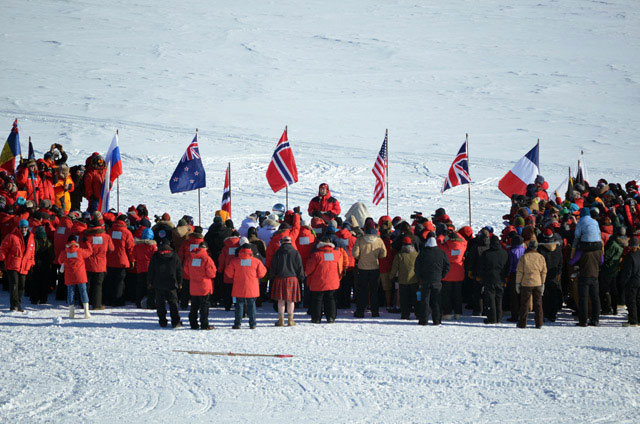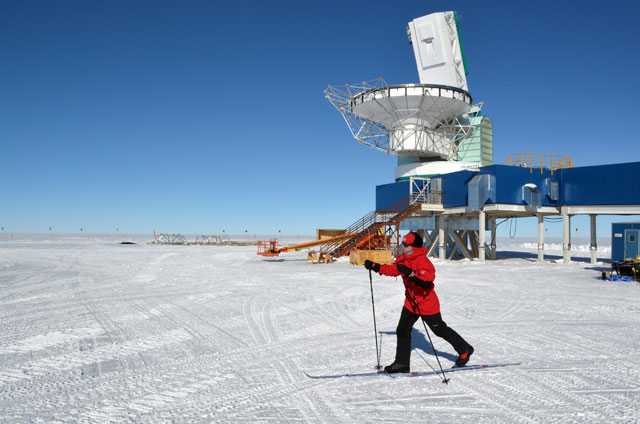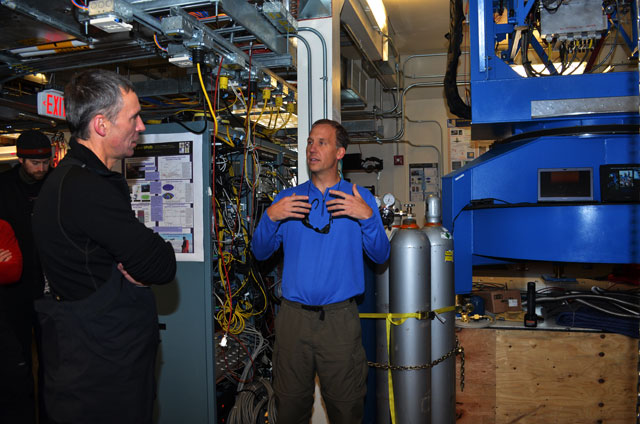South Pole anniversaryNorwegian prime minister visits bottom of the world to honor AmundsenPosted December 15, 2011
A celebration of past achievements and future promises received a warm reception in a very cold place this week, as the National Science Foundation hosted Norwegian Prime Minister Jens Stoltenberg On Dec. 14, 1911, Amundsen and four companions became the first people in history to reach the Pole. Briton Robert Falcon Scott and his party arrived about a month later but perished on the return journey. Historical Footnote
Roald Amundsen left his tent, Polheim, at the Pole when he departed. People are still interested in its whereabouts. See the related story: Seeking shelter — Search for Amundsen's tent continues a century later.
Stoltenberg and his companions, which included members of his staff and major Norwegian broadcast and print media, spent four days touring the station’s facilities and meeting with the many visitors who had arrived at the bottom of the world to commemorate Amundsen’s achievement. Amundsen’s success buoyed the young nation of Norway, which had become independent from Sweden in 1905. A century later, the accomplishment still looms large among his countrymen. “It was an important event for the world, but it was especially important for Norway, because we were a very young nation, and it was an important part of nation building,” Stoltenberg explained shortly after arriving at the South Pole. 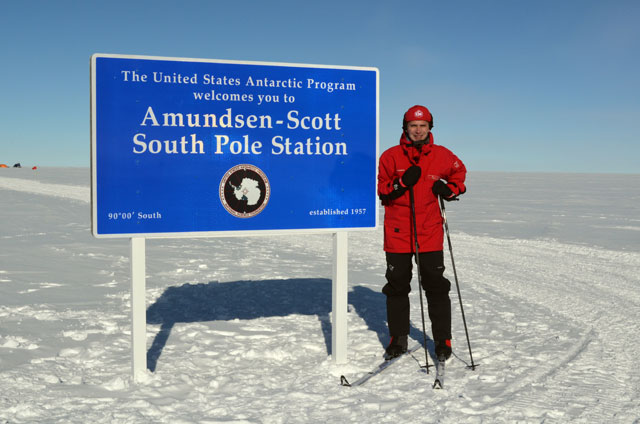
Photo Credit: Peter Rejcek
Norwegian Prime Minister Jens Stoltenberg stands next to the sign welcoming visitors to the Amundsen-Scott South Pole Station.
“I think no one can understand how it was for him, because no one had done it before; they were going into unknown territory, they were going into something that was untested. That creates an extra danger and an extra challenge,” he said later during an interview with The Antarctic Sun Stoltenberg is the first head of state to overnight at the South Pole Station. The United States first established the research facility during the 1956-1957 Southern Hemisphere summer, as part of the International Geophysical Year The National Science Foundation (NSF) The current South Pole Station — the third in the past 55 years — was dedicated in January 2008. It supports a wide variety of research, focusing on atmospheric science and astrophysics thanks to the pristine quality and clarity of the cold polar air. Stoltenberg had the opportunity to visit several of the major experiments and observatories that lie outside of the main station building. In true Norwegian fashion, he and his companions cross-country skied to each location on a nearly windless day, with a relatively mild South Pole temperature of about minus 25 degrees Fahrenheit. The station, which supports about 240 people in summer, sits on the polar plateau at an elevation of 9,300 feet. The tour included stops at telescopes that probe the mysteries of the universe, as well as a different type of telescope, located within the two-mile-high ice sheet at the South Pole, which searches for high-energy particles called neutrinos that have become a major focus of particle physics. “I’m really impressed by all of the activities that are going on out here,” Stoltenberg said. “It’s dealing with some of the fundamental issues we are trying to understand as humankind. I really admire what the U.S. is doing here.” John Carlstrom “[The Norwegians are] celebrating 100 years of exploration at the end of the Earth, and they get here and what they learn is that here we are, discovering the universe as far back as we can see. I like the connection,” Carlstrom said. On Dec. 14, at 4 p.m., an official celebration was held at the ceremonial South Pole, where the 12 flags of the original signatories of the Antarctic Treaty 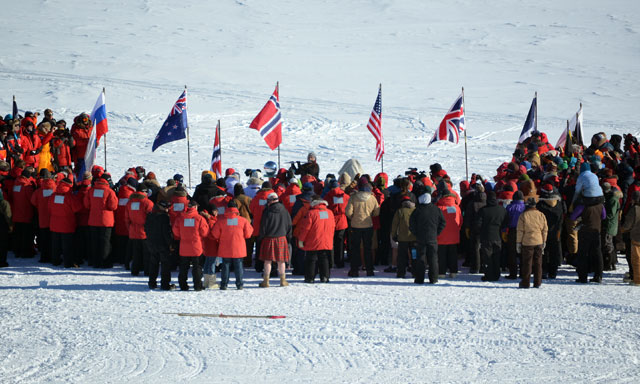
Photo Credit: Peter Rejcek
Zondra Skertich plays the Norwegian national anthem on the flute during the Dec. 14 celebration.
The event began with the playing of the Norwegian national anthem on the flute by Zondra Skertich, who works at the South Pole Station as a cargo load planner. Skertich has been in the USAP since the 2003-04 season in different logistics and supply jobs, but this was her first stint at the South Pole. She applied to work at the station with the hope of being there for the anniversary. “Amundsen is my favorite explorer,” she said. “This is part of the reason I signed up to be here.” Stoltenberg unveiled an ice bust of Amundsen during his speech. The prime minister noted that the achievements and sacrifices by the early explorers a century ago helped set the stage for today. “The arrival at the South Pole laid the foundation for what later on developed in the cooperation we see in this area between nations — a peaceful cooperation,” he said. “This is the only continent [where] countries in the world have decided to manage jointly together in a peaceful way, to promote scientific work.” |




